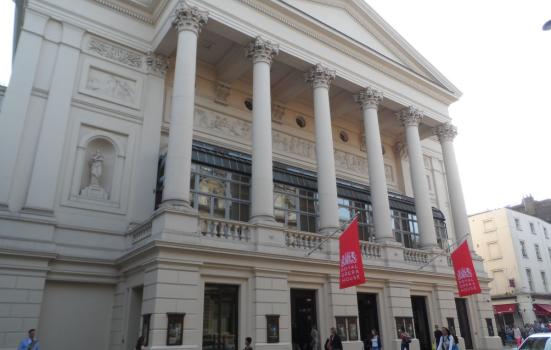The amount of money being donated to UK cultural organisations dropped sharply last year.

Greater numbers of individuals are supporting cultural organisations than at any time since 2018, but overall donor revenue dropped by 25% last year, a snapshot study has found.
Research by Tessitura Network, a non-profit firm that provides software services for cultural organisations across the world, found donations to its UK members amounted to £126.4m in 2021, but fell to £97.2m in 2022 - a drop of 25%.
The data is based on 24 cultural organisations including the Royal Opera House, Royal Shakespeare Company, Southbank Centre and Welsh National Opera.
READ MORE:
- AI and the future of arts fundraising
- Fundraisers are a scarce resource, let’s not make them scarcer
Total income from donations experienced one other dip in the five-year period that was analysed - from £107.7m in 2019 to £104.9m in 2020 when institutions were largely close due to Covid restrictions.
But it then bounced back to a five-year high of £126.4m in 2021.
The reduction in donor income coincides with many organisations experiencing cuts in their public funding.
Overall funding from Arts Council England (ACE) to National Portfolio Organisations increased by 9% to £446m a year for the 2023-26 investment period. The money is now shared among more organisations, meaning many previously-funded organisations are receiving less, with others having their funding pulled altogether.
The Royal Opera House saw its ACE funding cut by nearly £3m from £25.2m to £22.3m a year, Southbank Centre by nearly £2m, from £18.7m to £16.8m a year, and Welsh National Opera by £2.2m from £6.2m to £4m a year.
Although there has been a significant drop in overall donor income, the data shows that the total number of people donating to cultural organisations has risen to its highest level.
There were a combined 550,190 supporters making donations in 2022 - up 29% on the 426,453 reported in 2021.
Amalia Hordern, Senior Director, Asia Pacific, at Tessitura Network said the significant dip in the number of donors and members providing financial support during 2020 is "probably not surprising" due to the impact of the Covid pandemic, but have "bounced back and continued to grow".
"Donor and member numbers in terms of individual supporting in 2022 are the highest they have been in the five-year period, but conversely the revenue is considerably down," she said.
"During the pandemic, not surprisingly, there was a real pullback in that micro level support [from individuals] through add-on ticket donations.
"But there was a reasonably significant increase in the higher levels of support. However, that behavior has [now] snapped back."
Hordern says the data helps organisations identify opportunities to grow donor revenue, suggesting there is a mid tier of donors who stepped in to provide post-pandemic support who could be encouraged to give more, or potentially more frequently.
"Organisations can drill down and find out exactly who they are and kind of use that behavior as a focal point for growing that sort of support at those mid-tier levels," she said.
Case for support
Hordern says a history of public support for government funding of cultural organisations in the UK, as opposed to other countries - such as the US - which are far more reliant on philanthropic giving, means they are not always adept at maximising donor potential.
"I think for a lot of organisations in the UK and here [in Australia], creating the case for support hasn't been something that's been really part of the language and part of the culture of organisations," she said.
"Arts organisations, in the performing arts at least, tend to be very focused on selling tickets, so that becomes the primary focus of the business. Embedding the notion of fundraising as core to the business is critical.
"[During Covid] the place of arts and cultural organisations, and their status as charities, became very much clearer to see because of their absence.
"We have done a lot of focus group work about the Covid period and have seen a lot of organisations consolidate that sentiment. So we're seeing a lot of organisations really trying to leverage that learning and galvanize the organisation.
"We're seeing a bit of a shift in them really being able to identify that case for support and how to articulate it."




